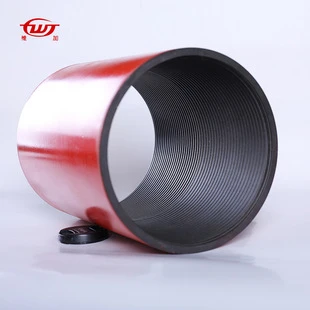- Afrikaans
- Albanian
- Amharic
- Arabic
- Armenian
- Azerbaijani
- Basque
- Belarusian
- Bengali
- Bosnian
- Bulgarian
- Catalan
- Cebuano
- Corsican
- Croatian
- Czech
- Danish
- Dutch
- English
- Esperanto
- Estonian
- Finnish
- French
- Frisian
- Galician
- Georgian
- German
- Greek
- Gujarati
- Haitian Creole
- hausa
- hawaiian
- Hebrew
- Hindi
- Miao
- Hungarian
- Icelandic
- igbo
- Indonesian
- irish
- Italian
- Japanese
- Javanese
- Kannada
- kazakh
- Khmer
- Rwandese
- Korean
- Kurdish
- Kyrgyz
- Lao
- Latin
- Latvian
- Lithuanian
- Luxembourgish
- Macedonian
- Malgashi
- Malay
- Malayalam
- Maltese
- Maori
- Marathi
- Mongolian
- Myanmar
- Nepali
- Norwegian
- Norwegian
- Occitan
- Pashto
- Persian
- Polish
- Portuguese
- Punjabi
- Romanian
- Russian
- Samoan
- Scottish Gaelic
- Serbian
- Sesotho
- Shona
- Sindhi
- Sinhala
- Slovak
- Slovenian
- Somali
- Spanish
- Sundanese
- Swahili
- Swedish
- Tagalog
- Tajik
- Tamil
- Tatar
- Telugu
- Thai
- Turkish
- Turkmen
- Ukrainian
- Urdu
- Uighur
- Uzbek
- Vietnamese
- Welsh
- Bantu
- Yiddish
- Yoruba
- Zulu
Understanding the Different Types of Casing and Tubing Connections in Oil and Gas Operations
Casing and Tubing Connections A Critical Aspect of Oil and Gas Production
In the oil and gas industry, the significance of casing and tubing connections cannot be overstated. These connections play a vital role in maintaining the integrity of wells, ensuring safe and efficient hydrocarbon extraction, and minimizing the risk of environmental incidents. This article explores the essential components, types, and considerations involved in casing and tubing connections.
Casing refers to the series of pipes that are inserted into a drilled well to stabilize the wellbore and protect it from environmental and operational influences. It serves multiple purposes preventing the collapse of the well, isolating different geological formations, and minimizing the risk of contamination between aquifers and oil reservoirs. The casing is installed in sections and is typically made from steel or other materials that can withstand high pressures and temperatures.
On the other hand, tubing is the inner pipe through which oil or gas flows to the surface after being extracted from the reservoir. Unlike casing, which is designed for structural integrity, tubing is primarily focused on facilitating the flow of hydrocarbons efficiently. The tubing must be carefully selected to match the specific conditions of the well, including the type of fluid being produced, temperature, pressure, and any corrosive agents present.
When discussing casing and tubing connections, several types come into play, including threaded connections, welded connections, and pressure-tight mechanical connections. Threaded connections are commonly used for both casing and tubing as they provide ease of installation and removal. However, they require careful machining and proper torque application to ensure a secure fit and prevent failure under pressure.
casing and tubing connections

Welded connections, while less common for casing and tubing applications, offer a robust alternative in specific scenarios where extra strength is required. These connections can withstand higher loads and are often used in deepwater or high-pressure well environments. Meanwhile, mechanical connections, which use specially designed devices to create a seal, are also essential, especially in circumstances where disassembly might be necessary.
When designing casing and tubing connections, engineers must consider multiple factors, such as the anticipated pressures, loads, temperature fluctuations, and potential corrosive agents in the well. The selection of materials and connection types also involves thorough evaluation and testing to comply with industry standards and best practices.
Moreover, proper installation and maintenance of these connections are critical for the long-term success of drilling operations. Faulty connections can lead to well blowouts, leakage, and significant financial losses. Consequently, ongoing monitoring and inspection are necessary to ensure that the connections remain in good condition throughout the well's lifecycle.
In conclusion, casing and tubing connections are fundamental components in oil and gas production, crucial for maintaining well integrity and facilitating safe hydrocarbon flow. Understanding the characteristics of various connection types, along with their proper installation and maintenance, is essential for optimizing production and mitigating risks associated with well operations. As the industry continues to evolve, advancements in materials and connection technology will play a pivotal role in enhancing the efficiency and safety of casing and tubing systems in the field.
-
Tubing Pup Joints: Essential Components for Oil and Gas OperationsNewsJul.10,2025
-
Pup Joints: Essential Components for Reliable Drilling OperationsNewsJul.10,2025
-
Pipe Couplings: Connecting Your World EfficientlyNewsJul.10,2025
-
Mastering Oilfield Operations with Quality Tubing and CasingNewsJul.10,2025
-
High-Quality Casing Couplings for Every NeedNewsJul.10,2025
-
Boost Your Drilling Efficiency with Premium Crossover Tools & Seating NipplesNewsJul.10,2025







